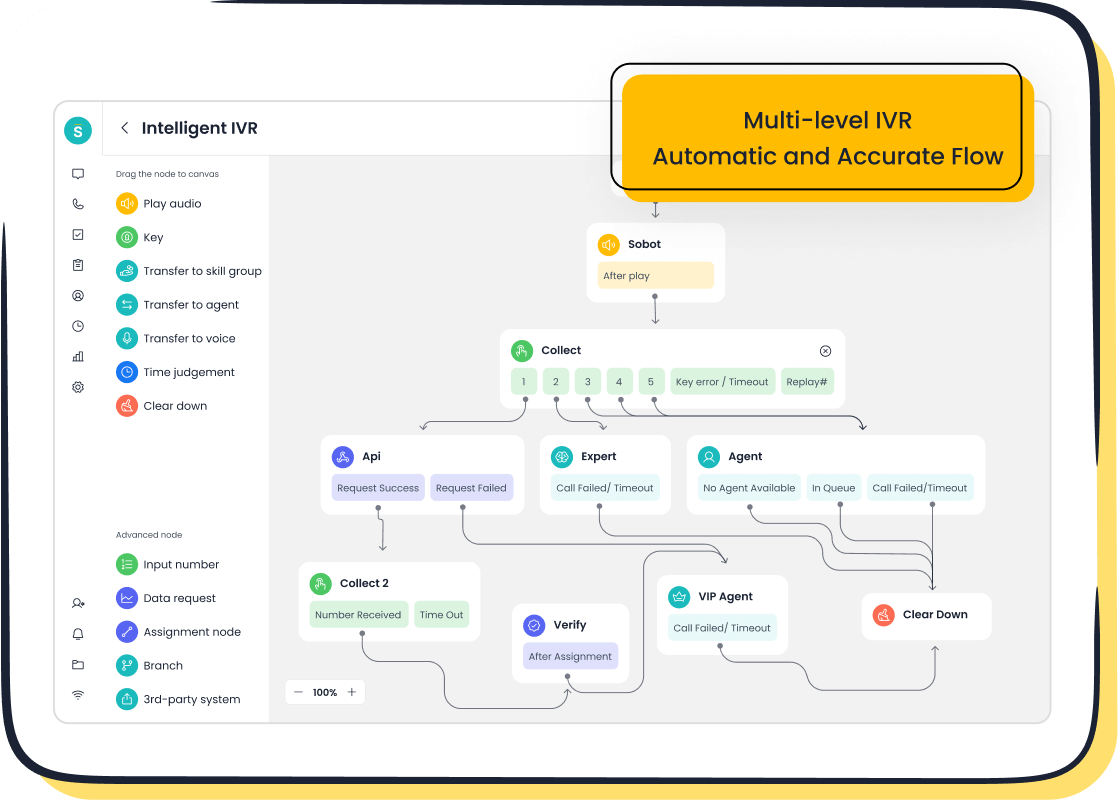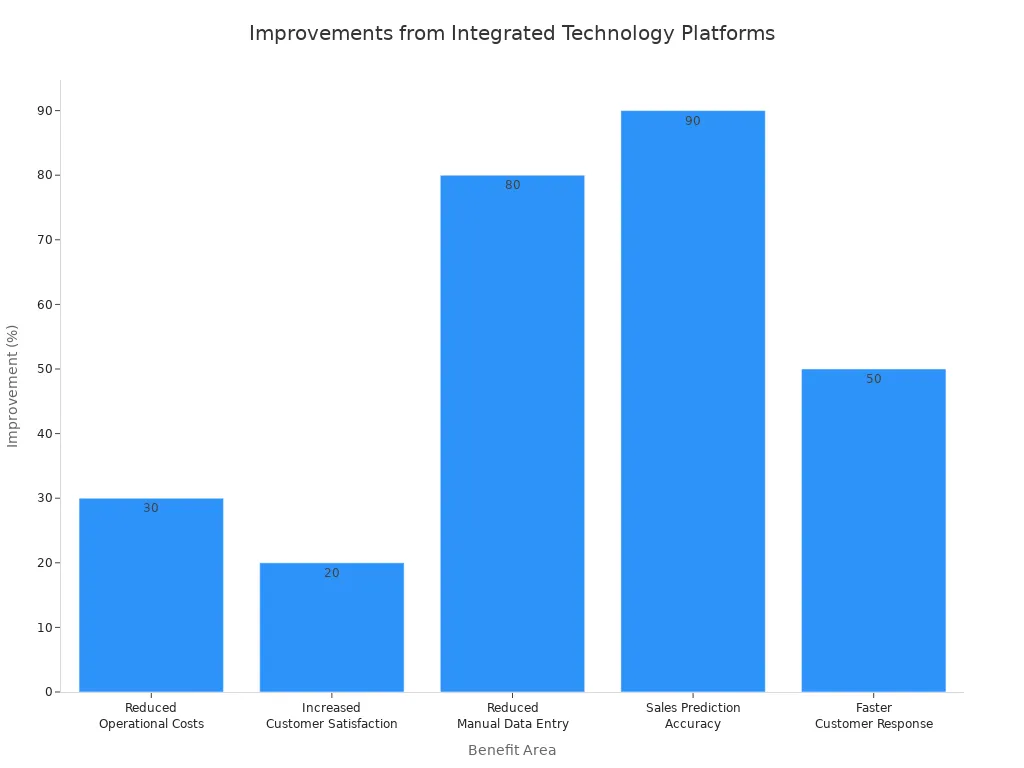Understanding Customer Operations vs Support

Customer support is the reactive frontline, solving immediate customer problems. In contrast, customer service operations is the proactive backbone, building the systems for efficient customer support. Think of customer support agents as skilled pilots flying the plane. Customer support operations is the ground crew and air traffic control system ensuring a safe, efficient journey. Mastering both is key for any brand, like Sobot's clients OPPO and Michael Kors, to enhance the customer experience. Strong customer service operations, using tools like a Sobot AI chatbot or a Sobot call center, drive customer satisfaction. This focus on customer support operations can lead to an 89% customer retention rate.
Core Missions: Support vs. Customer Service Operations

Understanding the core mission of each team clarifies their distinct value. One team focuses on immediate resolutions, while the other builds the foundation for long-term success. Both are essential for creating a superior customer experience.
The Role of Frontline Customer Support
The main goal of frontline customer support is to solve customer problems directly and quickly. This team is the human voice of the company. They interact with customers every day through phone calls, chats, and emails. Their work is reactive. A customer has a question, and the customer support team provides the answer.
Fast and effective problem-solving directly impacts how customers feel about a brand. Data shows a strong link between quick resolution times and higher customer satisfaction scores. Even a fast initial response can make a customer more patient and happy. The customer support team measures its success using several key indicators.
Common KPIs for Customer Support:
- Customer Satisfaction (CSAT): A direct measure of a customer's happiness with a specific interaction.
- First Call Resolution (FCR): The percentage of issues solved during the first contact.
- Average Handle Time (AHT): The average time an agent spends on a customer interaction.
- Net Promoter Score (NPS): A measure of long-term customer loyalty.
Ultimately, the customer support team is responsible for managing individual customer interactions and ensuring each person feels heard and helped.
The Role of Strategic Customer Service Operations
While customer support reacts to issues, strategic customer service operations works proactively to build a better system. This team designs the infrastructure that enables the frontline to succeed. Their mission is to make the entire support process more efficient, scalable, and consistent. Effective customer service operations are the architects behind a great service experience.
The responsibilities of a customer support operations team are broad and strategic. They focus on the "how" behind excellent service.
- They analyze data to find trends and the root causes of common problems.
- They develop standard procedures to ensure every customer receives the same high quality of service.
- They manage the technology and tools, like CRM or helpdesk software, that agents use.
- They create training materials to keep the customer support team skilled and knowledgeable.
- They build dashboards to monitor performance and track progress toward goals.
Good customer service operations allow a company to handle more customer inquiries without needing to hire more agents. This efficiency reduces costs and improves response times. By designing better customer support processes, the customer support operations team ensures the business can grow smoothly. To achieve this, they often use different frameworks and models, representing various types of customer service operations strategies. For example, a Service Blueprint helps visualize the entire customer journey to identify areas for improvement, ensuring high-quality service delivery from start to finish. This strategic focus makes customer service operations a powerful engine for business growth and customer loyalty.
A Look at Daily Responsibilities
The core missions of customer support and customer service operations translate into very different daily routines. One team is on the front lines, engaging directly with customers in real-time. The other team works behind the scenes, analyzing data and refining the systems that make those interactions successful.
A Day in the Life of a Support Agent
A support agent's day is dynamic and reactive, driven entirely by customer needs. Their work centers on direct communication and immediate problem-solving. The primary goal is to provide fast, empathetic, and effective assistance.
A typical day for a member of the customer support team involves several key activities:
- Morning Preparation: The day begins with a review of any updates, new product features, or overnight tickets. Agents check their calendars for scheduled calls and join team briefings to align on priorities.
- Handling Inquiries: Agents manage a constant flow of customer questions across multiple channels. They may answer phone calls, respond to live chats, manage emails, and engage on messaging apps like WhatsApp or Facebook Messenger. Each interaction requires patience and deep product knowledge.
- Troubleshooting and Resolution: The core of the job is troubleshooting. An agent might guide a customer through a technical issue, clarify a billing question, or address a service complaint. Their focus is on achieving First Call Resolution (FCR) whenever possible.
- Escalating Complex Issues: Not every problem can be solved by a frontline agent. When an issue requires deeper expertise or higher authorization, the agent follows a clear escalation process. This often involves a tiered model:
- Functional Escalation: The agent transfers the customer to a specialized department, like billing or technical support, that has the exact skills needed.
- Hierarchical Escalation: The agent moves the issue to a supervisor or manager who has the authority to approve a special request, like a unique refund.
- End-of-Shift Wrap-Up: Before logging off, agents document unresolved issues for the next shift. They finalize their notes in the CRM and ensure any critical information is passed along for a smooth handover.
Throughout the day, the customer support agent is the voice of the company. Their ability to manage multiple conversations while providing high-quality, personal service is fundamental to a positive customer experience.
Daily Tasks in Customer Support Operations
While the customer support team reacts to individual issues, the customer support operations team works proactively to prevent those issues from happening again. Their day is structured around analysis, strategy, and system improvement. Effective customer service operations build the foundation for a scalable and efficient support department.
The daily tasks in customer support operations are strategic and data-driven:
- Analyzing Ticket Data for Trends: The team dives deep into support ticket data. They look for recurring themes, such as common product bugs, frequently asked questions, or issues that take a long time to resolve. By identifying the root cause of these trends, they can recommend systemic fixes.
- Managing and Optimizing Support Software: Customer support operations owns the tech stack. They configure the CRM and helpdesk software to automate repetitive tasks like ticket sorting and assignment. They set up integrations with other systems to give agents a complete view of the customer, and they ensure the omnichannel dashboard centralizes all conversations for a seamless workflow.
- Creating and Updating Training Materials: This team equips the customer support team for success. They develop comprehensive training programs that cover product knowledge, industry specifics, and conflict management. A key part of this involves creating practice exercises, like mock calls, to simulate real customer situations and build agent confidence. They also maintain the internal knowledge base, ensuring it is always up-to-date.
- Building and Monitoring Performance Dashboards: You can't improve what you don't measure. The customer support operations team builds and maintains dashboards that track key performance indicators (KPIs).
Common Metrics on an Operations Dashboard:
- First Contact Resolution (FCR): Measures the percentage of issues solved in one interaction.
- Average Handle Time (AHT): Tracks the average time an agent spends on an interaction.
- Ticket Volume Trends: Monitors the number of new tickets to anticipate staffing needs.
- Escalation Rate: Shows the percentage of tickets that require escalation, highlighting potential training gaps.
By focusing on these proactive tasks, customer service operations improves the overall quality of customer support. They refine customer support processes to reduce agent effort, lower response times, and ultimately create a more consistent and reliable service experience. This strategic work is what allows a company's customer support to scale effectively.
The Tech Stack: Tools That Empower Both Teams
Modern platforms are crucial for both customer support and customer service operations. The right technology gives frontline agents the tools to resolve issues quickly. It also provides the customer support operations team with the data needed to build a more efficient system.
Tools for the Support Frontline
The customer support team relies on tools that streamline communication and provide immediate access to customer information. Their tech stack is designed for real-time interaction and quick problem-solving.
Key tools for the customer support frontline include:
- Helpdesk and Ticketing Systems: To manage and track customer requests.
- Live Chat and Messaging: For instant communication on websites and apps like WhatsApp.
- VoIP Phone Systems: To handle inbound and outbound calls.
- CRM Software: To access customer history and personal details.
Platforms like Sobot's Omnichannel Solution bring these tools together. They create a unified workspace where agents can see every customer interaction in one place. This consolidation of data helps agents resolve issues faster, improving first-contact resolution and reducing handle times.
Leveraging Sobot for Operational Excellence
Effective customer service operations depend on powerful analytics and reporting tools. The customer support operations team uses technology to analyze performance, identify inefficiencies, and make data-driven decisions. This strategic work is essential to improve customer service operations.

Sobot's platform provides the deep analytics needed for this role. For example, the Voice/Call Center's data analysis features allow the customer service operations team to monitor key metrics.

By tracking metrics like escalation rates and resolution rates, the customer support operations team can spot trends. A high escalation rate might signal a need for better agent training. A low chatbot resolution rate could highlight an opportunity to update the knowledge base. This focus on data helps the customer service operations team refine processes, enhance the quality of customer support, and ensure the entire department runs smoothly.
How Collaboration Boosts Customer Satisfaction

Customer support and customer service operations are not separate silos. They work together in a symbiotic loop to improve customer satisfaction. This collaboration turns daily interactions into long-term improvements, creating a better customer experience.
From Frontline Feedback to Systemic Improvements
The customer support team is the company's direct line to the customer. They gather valuable customer feedback every day. This customer feedback provides raw, unfiltered insights into customer needs and pain points. However, this information is only useful if it leads to action. This is where customer support operations steps in.
Effective customer service operations depend on a steady flow of customer feedback. The customer support operations team analyzes this data to identify trends and root causes. They use this customer feedback to refine customer support processes and improve the quality of service.
A strong feedback loop involves several key practices:
- Regular Meetings: Teams meet consistently to discuss customer feedback and coordinate action.
- Clear Roles: Each team has specific responsibilities for addressing the customer feedback.
- Centralized Tools: A single system captures customer feedback from all channels for easier analysis.
This process ensures that insights from the frontline lead to systemic changes. For example, frequent questions about a feature can prompt the customer support operations team to update the knowledge base. This proactive work improves the quality of future interactions and boosts overall satisfaction. The customer support operations team turns customer feedback into a powerful tool for growth.
A Real-World Example: OPPO and Sobot
The partnership between OPPO and Sobot shows this collaboration in action. OPPO faced a high volume of customer inquiries, which strained its customer support team. The company needed a way to improve efficiency without sacrificing satisfaction.
OPPO implemented Sobot’s chatbot, an operational tool managed by its customer service operations team. The chatbot handled repetitive questions, which freed human agents to focus on complex issues requiring a human touch. This is a perfect example of customer service operations empowering the customer support team. The results were remarkable.
- The chatbot achieved an 83% resolution rate, significantly reducing the workload on agents.
- This collaboration led to a 94% positive feedback rate, proving a direct link between efficient customer support processes and high customer satisfaction.
By using technology to automate simple tasks, OPPO’s customer service operations team enabled the customer support agents to deliver higher-quality service. This strategic approach improved the customer experience and increased customer satisfaction. The success highlights how strong customer support operations directly contribute to better business outcomes and greater satisfaction.
Customer support is the reactive response team. In contrast, customer service operations is the proactive strategy team. Top companies do not choose one over the other; they invest in both customer support and customer service operations. Effective customer service operations are essential. Platforms like Sobot bridge the gap between customer support operations and customer service operations. They create a single, efficient ecosystem by centralizing data. This unified work by customer support operations and customer service operations drives business growth, customer satisfaction, and long-term customer loyalty.
FAQ
What is the main difference between customer support and customer service operations?
Customer support teams reactively solve individual customer problems. In contrast, customer service operations teams proactively build and refine the systems that make support efficient. Support is the frontline, while operations is the backbone.
Why are customer support operations important for a business?
Effective customer support operations improve efficiency and consistency. The team analyzes data to fix root problems. This work allows a company to scale its service, reduce costs, and increase overall customer satisfaction.
Can a small business have customer service operations?
Yes. Even a single person can perform customer service operations tasks. This includes analyzing customer feedback, creating standard response templates, or managing the helpdesk software. The goal is to improve the support process, regardless of team size.
How do these two teams work together?
They collaborate in a feedback loop. The support team gathers direct customer insights. The operations team uses this data to improve tools, update training, and refine processes, which empowers the support team to deliver better service.
See Also
Achieve Excellence: Optimizing Live Chat for Superior Customer Service Interactions
Transforming Support: How AI Agents Are Revolutionizing Customer Service Operations
Demystifying the Role: A Comprehensive Look at IT Call Center Agents
Elevate Your SaaS: Strategic Live Chat Approaches for Enhanced Customer Support
Essential Principles: A Comprehensive Guide to QMS in Call Center Management
